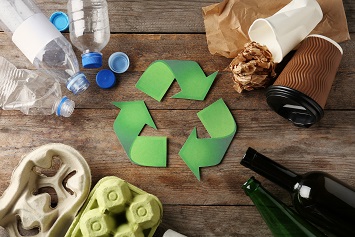To mark the beginning of America Recycles Week, the EPA released an update to its Advancing Sustainable Materials Management: Facts and Figures data report on national municipal solid waste (MSW) and construction and demolition debris for the year 2018.
“The environmental and economic benefits from recycling are clear, and we’ve made a lot of progress, but much more needs to be done to get our national recycling rate where it needs to be,” said EPA Administrator Andrew Wheeler. “Our America Recycles Network partnerships will usher in dramatic changes in U.S. recycling by improving aging infrastructure, developing secondary markets, and communicating recycling methods more effectively with the public.”
The EPA has a vast amount of data on waste and materials recycling dating back to the 1960s.
“The combined recycling and composting rate increased from less than 10 percent of generated MSW (trash) in 1980 to 35 percent in 2017, but then dipped to 32 percent, as measured in 2018,” according to the EPA. “Specifically, in 2018, 292.4 million tons of MSW were generated. About 93.9 million tons of MSW were recycled and composted, resulting in a 32 percent recycling rate. An additional 17.7 million tons were managed through other food management pathways.
“For the Facts and Figures data, EPA enhanced its food measurement methodology to more fully account for all the ways in which wasted food is managed throughout the food system,” the EPA adds. “Finally, EPA added construction and demolition debris management data, so both generation and management of construction and demolition debris are included.”
Recycling has a number of benefits besides reducing the amount of trash we throw away, according to Conserve Energy Future.
- It protects the environment by reducing the need to mine and process new raw materials.
- It reduces pollution.
- It’s environmentally friendly, especially in paper recycling, because it saves trees.
- Reduces impacts on global warming as the recycling process “involves minimal waste disposal.”
“Recycling is a key driver of the U.S. economy and a good way to save resources and protect the environment,” according to the EPA. “When we recycle, we reduce the amount of trash sent to landfills and reduce air pollution. We also save natural resources, such as timber and water, and keep our environment healthy by reducing the need to create new materials. We help our economy by using materials from the United States, supporting American manufacturing, and creating jobs in the recycling and manufacturing industries.”
In 2018, Wheeler convened the first America Recycles Summit, where many industry, nonprofit, and government leaders came together to discuss ideas to “enhance the nation’s recycling infrastructure, create new markets for recycled materials, and improve public education regarding recycling,” according to the EPA. Since then, the annual event has grown to more than 40 exhibitors. This year’s event was conducted virtually on November 16–17.
To learn more about the EPA’s program, visit its America Recycles website.

